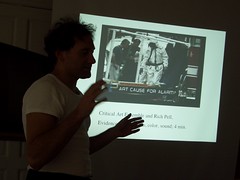National Library of Medicine’s (NLM) History of Medicine Division has launched a new web exhibit called “Diseases of the Mind: Highlights of American Psychiatry Through 1900”. It covers the 18th and 19th centuries only and thus falls outside the period limit of his blog, but since web exhibits are always interesting to learn from I thought I would mention it anyway.
Unfortunately, however, there are not many positive lessons to draw from this site. The texts are factually okey and there are some well-chosen and evocative pictures from the library’s Images from the History of Medicine collection. But the historiography is traditional at best, and the site architecture is far from what one would expect from a 2007 web exhibit — there are no references to the history of psychiatry literature, there are are few internal links, but no external links, and overall the website reads like a pretty traditional introductory historical chapter to a psychiatry textbook.
In other words, this exhibit does not live up to the usual standards of NLM’s History of Medicine Division. Any other opinions on this?

